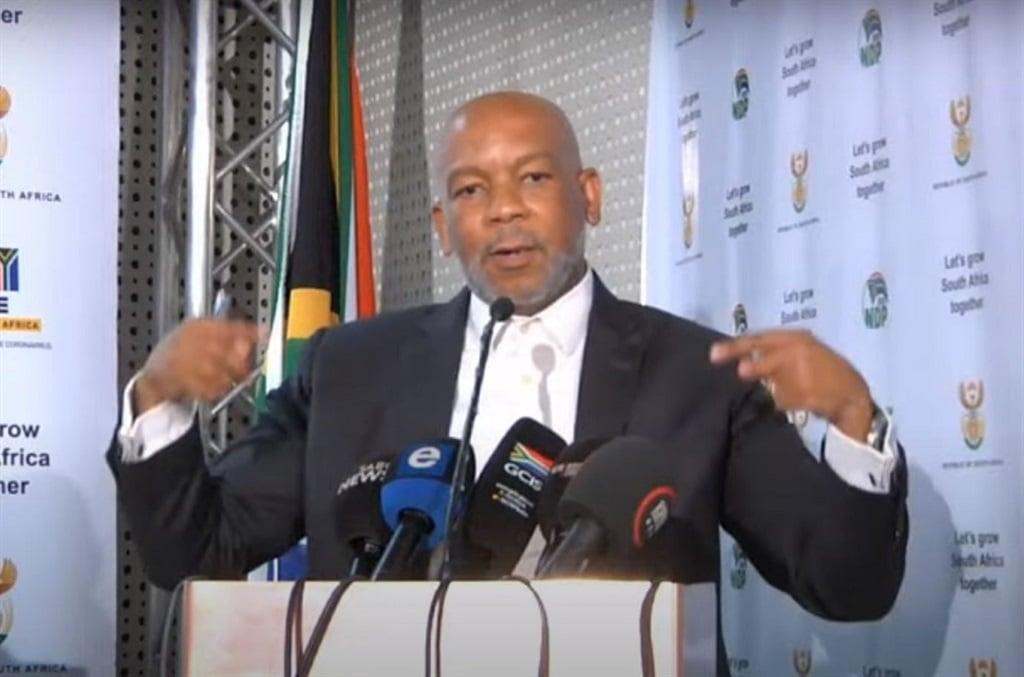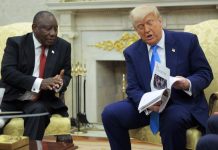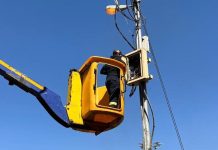Africa-Press – South-Africa. Government has reaffirmed it is open to accepting emergency energy from power ships, but relevant contracts will not be longer than five years, according to Electricity Minister Kgosientsho Ramokgopa.
The minister on Friday provided an update on the implementation of the Energy Action Plan. Rudi Dicks, who is head of the project management office in the Presidency and also part of the National Energy Crisis Committee, was also in attendance.
Among the interventions for the energy crisis is the emergency procurement of power. Government is “technology agnostic” when it comes to emergency procurement, and power ships are part of the “solutions in the mix,” Ramokgopa said.
Power could be sourced in varied ways – for example, a power ship could be docked outside the country, but electricity generated could be transferred to South Africa across a transmission network, he explained.
This followed statements by President Cyril Ramaphosa a day before when he was responding to questions in Parliament. Ramaphosa said that the country needed emergency power. He made reference to some African countries which had brought in emergency power from ships. “I do believe that is the way to go right now,” Ramaphosa said.
Ramokgopa was consequentially asked about whether the government is engaging in possible contracts with Karpowership outside the Risk Mitigation Independent Power Producer Procurement Programme, where the Turkish company was named a preferred bidder. Karpowership’s three projects that would have added more than 1 200MW have faced various challenges and have had their environmental authorisation denied.
Ramokgopa said that government is not engaging in negotiations, but it has been inundated with submissions for emergency power. He, however, said that the emergency procurement must still be a transparent and competitive process and “not something negotiated behind closed doors”.
Dicks said that it is not only ships being considered but also battery storage and “other forms of technology”. He said Eskom would have to consider these on a “case-by-case basis”, taking into account costs and the speed at which power can be added to the grid.
As for the time frames for the emergency procurement programme, Ramokgopa said this would not be longer than five years.
“When we talk of emergency procurement, it is anything between three to five years. We are not looking beyond that period.”
This should be enough time to build new, generation plants in the interim, he explained.
Among the other updates announced, Ramokgopa said the National Energy Regulator of South Africa (Nersa) would soon be holding public hearings in order to give its concurrence for a ministerial determination related to three of Necom’s initiatives. These are the emergency procurement programme, along with the load shedding reduction programme and cross-border reduction programme. Ramokgopa said once Nersa gives its concurrence or approval as much as 3 800MW could be added to the grid.
The load reduction and cross-border programmes would see emergency power solutions brought online six months after power purchase agreements are signed. These programmes are to be launched in June, following Nersa’s concurrence.
In the short term, 400MW will be added to the grid by the end of May 2023, ahead of the winter period. This power is to be procured through Eskom’s Standard Offer programme – whereby energy is bought from industrial users and other independent generation plants. Kelvin coal power station in Johannesburg and some industrial or large-scale producers like Sasol are also in the mix.
“Each and every little megawatt we can get is going to help provide additional relief,” said Ramokgopa.
Details of the tariffs at which power is being sold to Eskom could not be provided at the briefing, as Dicks explained that there are two pricing options, and it is not known which one Kelvin opted for.
For example, there is a static or fixed price, which is close to the wholesale price that electricity is sold. There is a variable or dynamic pricing option, which changes on a daily basis based on the trade between demand and supply – but it is capped at R1.93/kWh.
Ramokgopa said that any option that is cheaper than diesel – used to run Open Cycle Gas Turbines (OCGT) – is worth considering. “Running the OCGT costs an inordinate amount of money. We are only doing that because we want to save the South African economy.”
Ramokgopa also spoke to efforts to roll out the demand-side management programme, which would incentivise households to use power outside peak times. Getting as many as 200 000 households (with an average consumption of 5MW) to reduce their consumption could spare the country of one stage of load shedding, he said.
The minister also had a meeting South African Property Owners Association on Friday. As much as 100 million square meters of rooftop space is available on its members’ buildings. Using 50% of this space for solar PV could add 9.5GW of energy, he said.
Property owners do not need state funding, as they would be able to raise capital for rooftop solar PV for commercial banks, said Ramokgopa.
He added that requests for proposals for 5 000MW of wind and solar PV, 1 200MW of battery storage and 3000MW of gas is expected in June.
For More News And Analysis About South-Africa Follow Africa-Press






